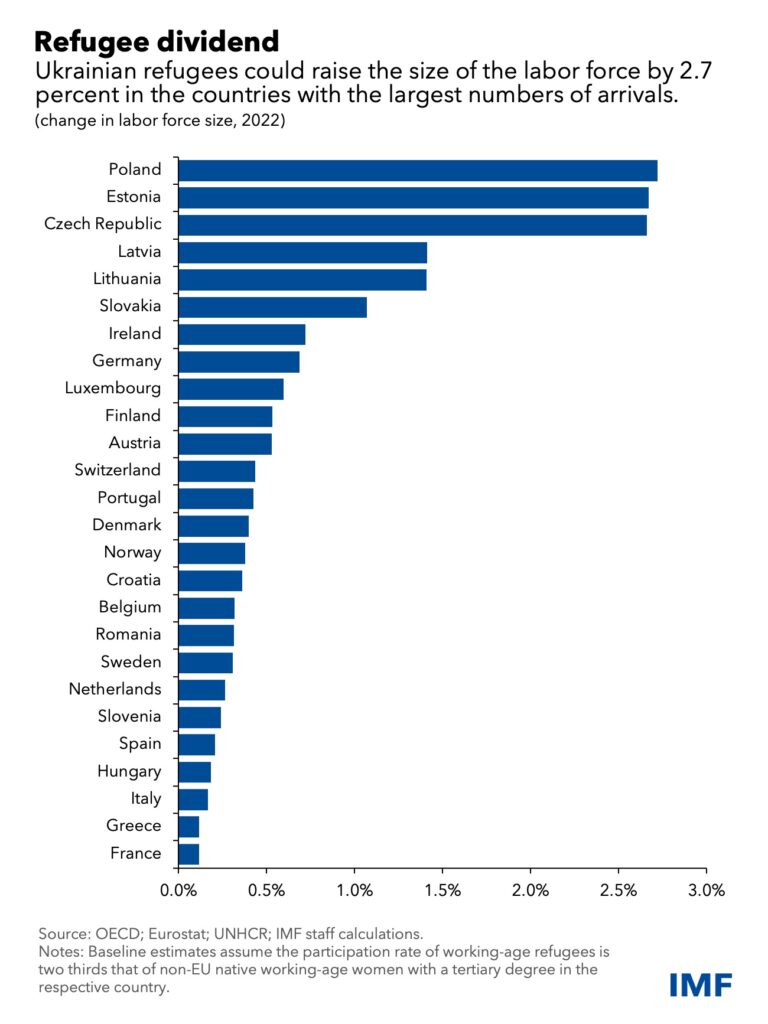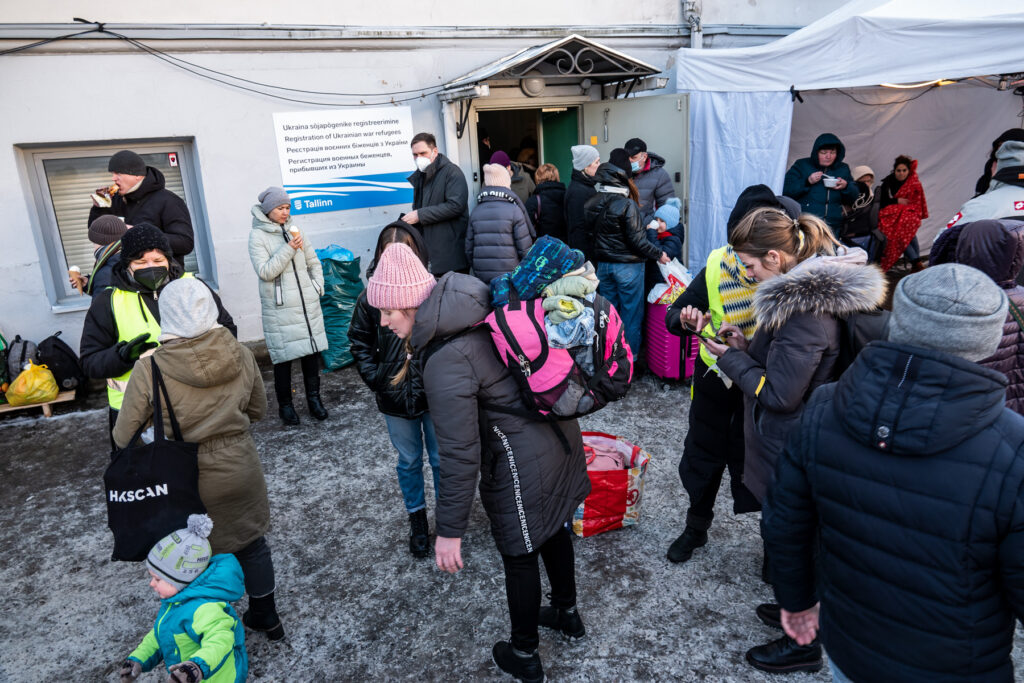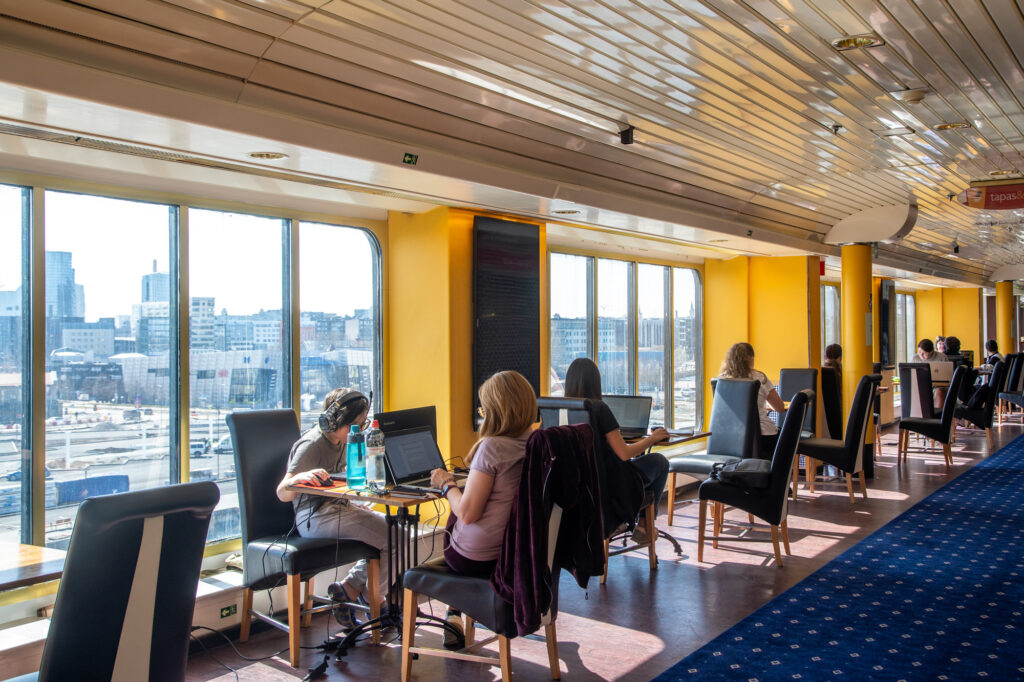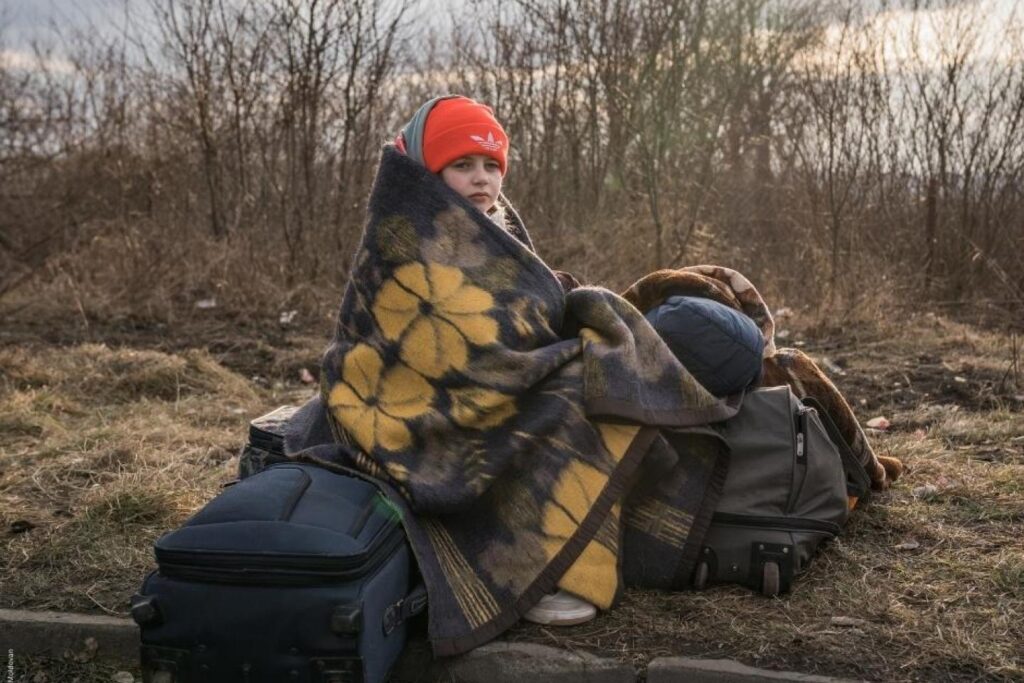Almost eight million refugees have fled Ukraine since Russia’s invasion in February, Europe’s largest refugee wave since the Second World War, with the majority of those now in the European Union; according to the IMF, Estonia has accepted over 62,000 Ukrainian refugees – as a share of population, more than any other EU country.
Almost five million people from Ukraine are registered for temporary protection in the EU or in similar national programmes. The EU has removed many barriers refugees typically face by offering residency rights, work permits, and access to health care, schools, housing and banking services.
According to the International Monetary Fund, Estonia, the Czech Republic and Poland have the largest shares of Ukrainian refugees among the EU member states.

The organisation analysed the challenges but also opportunities that come with the high number of refugees.
“Supporting refugees comes with some short-term fiscal costs. Across the EU, these could reach 30 billion euros to 37 billion euros in the first year, or about 0.2 percent of gross domestic product. Countries with the largest shares of refugees, including the Czech Republic, Estonia, Moldova (a candidate country of the EU) and Poland, could incur fiscal costs this year equal to about 1 percent of GDP. The larger share of women and children will result in more spending on childcare, education, and health care services,” the IMF said in a blog post.
“Over the medium term, however, refugees could boost economic growth and tax revenue while helping ease current labor market tightness in some parts of Europe. We estimate that Ukrainian refugees could raise the size of Europe’s labor force by some 0.6 percent by the end of 2022, and by 2.7 percent in the countries with the largest numbers of arrivals, where Ukrainian refugees will ease labor shortages.”

Any increase in unemployment because of this surge in labour is likely to be temporary and early signs of refugees’ integration into European labour markets are promising, the IMF noted.
How the new refugees affect economic growth in coming years will depend primarily on the speed and quality of their labour market integration, particularly on whether they end up in low-paid jobs that do not match their qualifications or skills. “This concern that skills could be downgraded is a risk given that Ukrainian refugees tend to be well educated. At least half of working-age women have completed tertiary education and this share is even higher in some countries, rising to about three-quarters in Germany.”

Better integration will help Europe as well as those fleeing Ukraine
Europe can do more to help integrate refugees into its societies and economies, the IMF said.
“Active labor market policies, which so far have been used to varying degrees, could become more tailored to enhance refugees’ skills and labor market success. These include, for example, the recognition of qualifications, language training, and job search and matching services. Affordable care services are also key to enabling Ukrainian women to fully participate in host country labor markets.”
“Central governments will need to adequately fund local governments, which typically administer programs not only in active labor market policies, but also in education, healthcare, social welfare, and housing, all of which will need continued support.”
The IMF said “it is important to continue the strong solidarity” that has allowed Europe to “respond so effectively to the refugee crisis” so far. “Policies that help refugees to integrate economically will help Europe as well as those fleeing Ukraine.”

The International Monetary Fund is a major financial agency of the United Nations, headquartered in Washington, DC, consisting of 190 countries. Its stated mission is “working to foster global monetary cooperation, secure financial stability, facilitate international trade, promote high employment and sustainable economic growth, and reduce poverty around the world.”
Read also: Updates: Russia’s invasion of Ukraine – reactions in Estonia.

